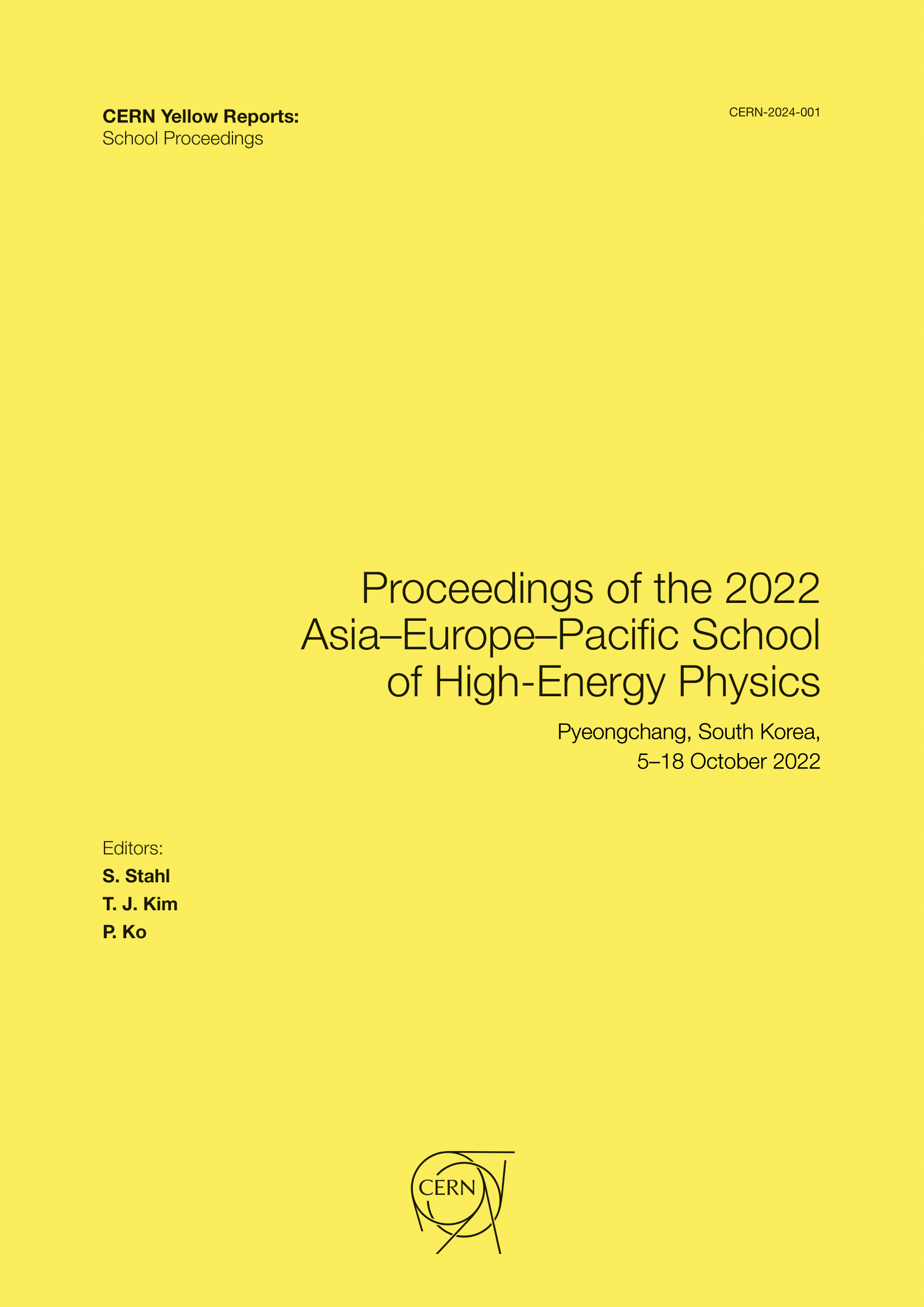Neutrino physics
DOI:
https://doi.org/10.23730/CYRSP-2024-001.47Abstract
In this lecture, I start with presenting the history of the neutrino from its invention to what we have discovered about its properties till now. I explain how we can observe neutrinos produced both naturally and artificially. Naturally produced neutrinos come to the Earth from the Sun, supernovae, collisions of cosmic rays with nuclei in the atmosphere, natural radioactivity, etc. On the other hand, those produced in accelerators and nuclear reactors are the examples of artificial neutrinos. I also illustrate what neutrino oscillations are and how such phenomena could be observed from various
experiments to detect neutrinos produced in the aforementioned ways. Thanks to the discovery of neutrino oscillations, we are forced to modify the Standard Model, so as to accommodate the masses of neutrinos and lepton flavor mixing, which are essential to make neutrino flavor change. In fact, neutrinos can come in three different flavors, electron, muon and tau, and can change from one flavor to another. The origin of the tiny neutrino masses is still unknown, although we now know a few
nice mechanisms capable of generating them. The generation of neutrino masses signifies physics beyond the Standard Model and can, therefore, be related to some of the unresolved fundamental issues, such as the origin of flavors, the unification of forces, the matter-antimatter asymmetry, etc. Some physicists believe that CP violation in neutrinos may be a missing piece in the understanding of the origin of the matter-antimatter asymmetry. I pedagogically explain how we can probe CP
violation through neutrino oscillation experiments.
Downloads
Published
Issue
Section
License

This work is licensed under a Creative Commons Attribution 4.0 International License.
Authors who publish with this publication agree to the following terms:
- CERN retains copyright and publishes the work licensed under the Creative Commons Attribution License 4.0 that allows others to share the work with an acknowledgement of the work's authorship and initial publication in this series.
- Authors are able to enter into separate, additional contractual arrangements for distribution of the published version of the work (e.g., post it to an institutional repository or publish it in a book), with an acknowledgement of its initial publication in this series.
- Authors are permitted and encouraged to post their work online (e.g., in institutional repositories or on their website) prior to and during the submission process, as it can lead to productive exchanges, as well as earlier and greater citation of published work (See The Effect of Open Access).

